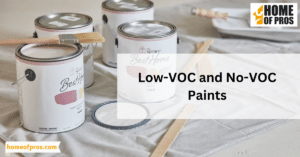When it comes to interior painting, selecting the right color palette is crucial. Consider the room’s purpose and lighting, as brighter colors can make a space feel larger, while darker hues create coziness. Don’t forget proper surface preparation and high-quality paints to ensure a lasting and beautiful finish.
Interior painting is a powerful tool in the realm of home improvement. It has the remarkable ability to not only change the colors on your walls but also to redefine the entire atmosphere of a room. In this blog, we’ll explore the transformative potential of the right paint and the key factors to consider when embarking on an interior painting project.
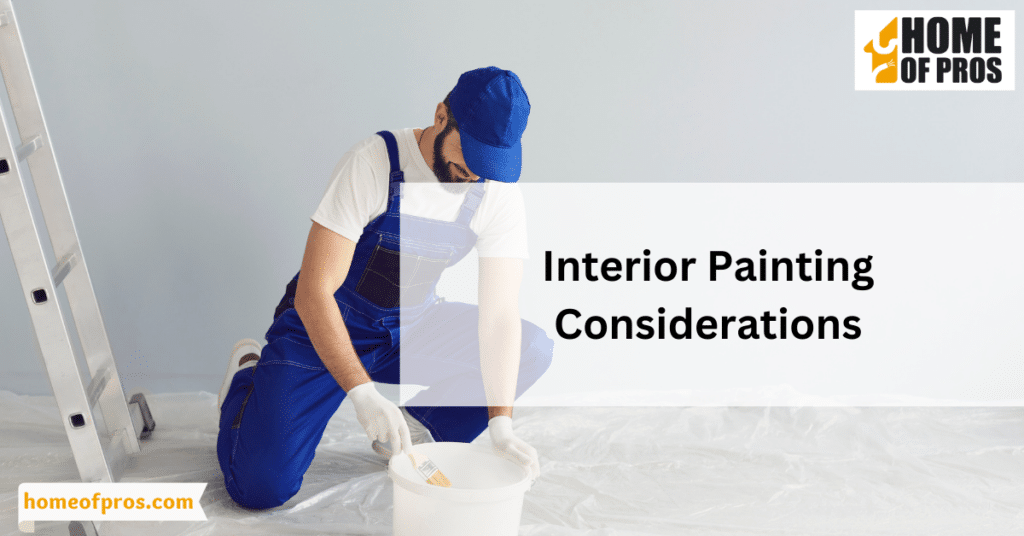
Choosing the Right Color Palette
Selecting the perfect color palette for your interior spaces is more than just picking a shade; it’s about creating the right mood and atmosphere. Colors have the remarkable power to influence emotions, and choosing the right ones is essential.
To achieve harmony, consider the room’s purpose and lighting conditions. For instance, calming blues work well in bedrooms, while vibrant tones can energize living areas. Whether you seek coziness or productivity, selecting the right colors is the first step in crafting a space that aligns with your vision and its intended function.
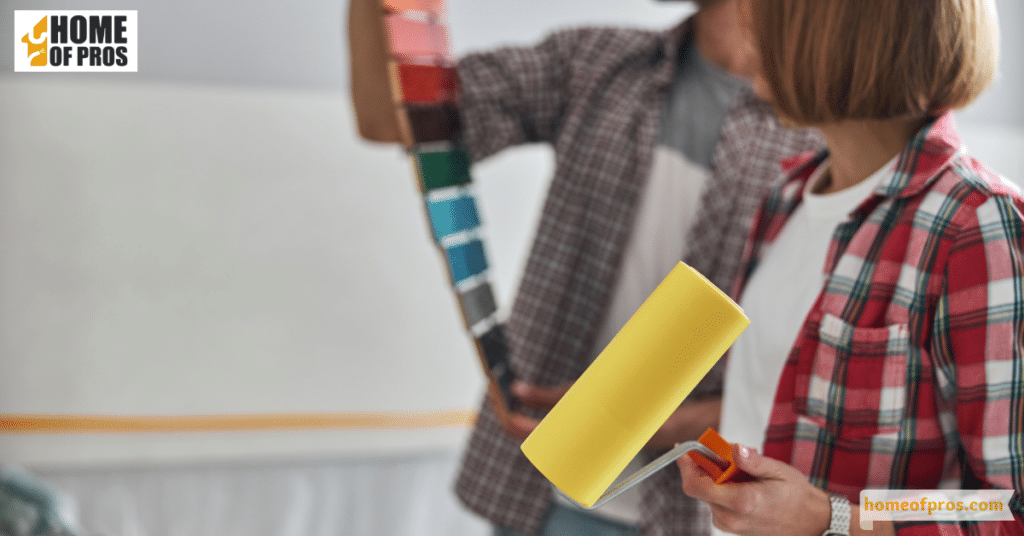
Surface Preparation
Before you embark on your interior painting journey, there’s a vital step that often goes overlooked but is absolutely essential for a flawless finish—surface preparation. In this section, we will delve into the intricate process of preparing your surfaces for painting, understanding the significance of each step along the way.
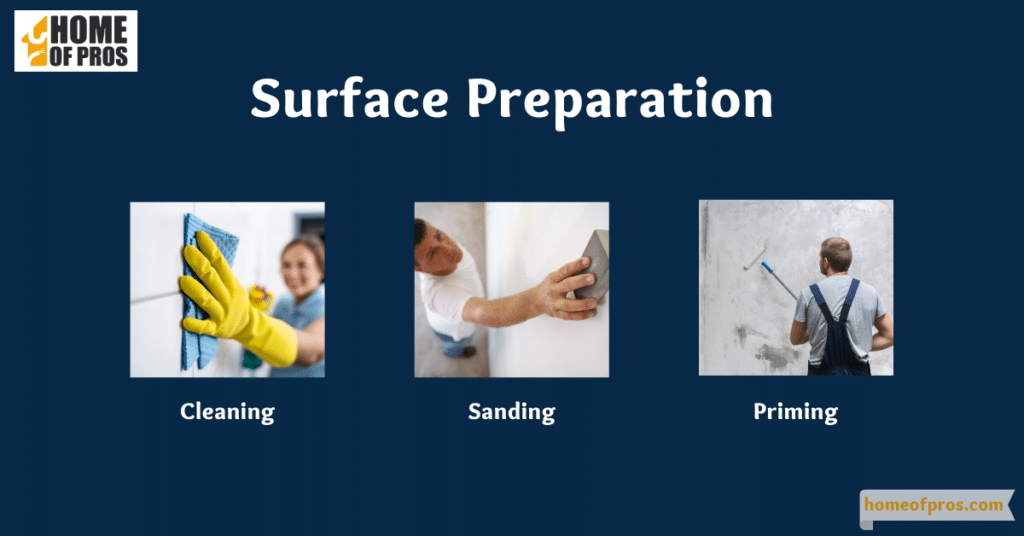
Cleaning: A Prerequisite for Perfection
Cleaning is the initial and vital step in preparing surfaces for painting. It involves removing dust, dirt, grease, and other contaminants from the walls and ceilings you plan to paint. Even the tiniest particles can affect paint adhesion and lead to an uneven finish.
By thoroughly cleaning the surfaces, you create a clean canvas that allows the paint to adhere properly, ensuring a more durable and aesthetically pleasing result. Effective cleaning techniques may include dusting, wiping with a damp cloth, and using mild detergents or cleaners where necessary.
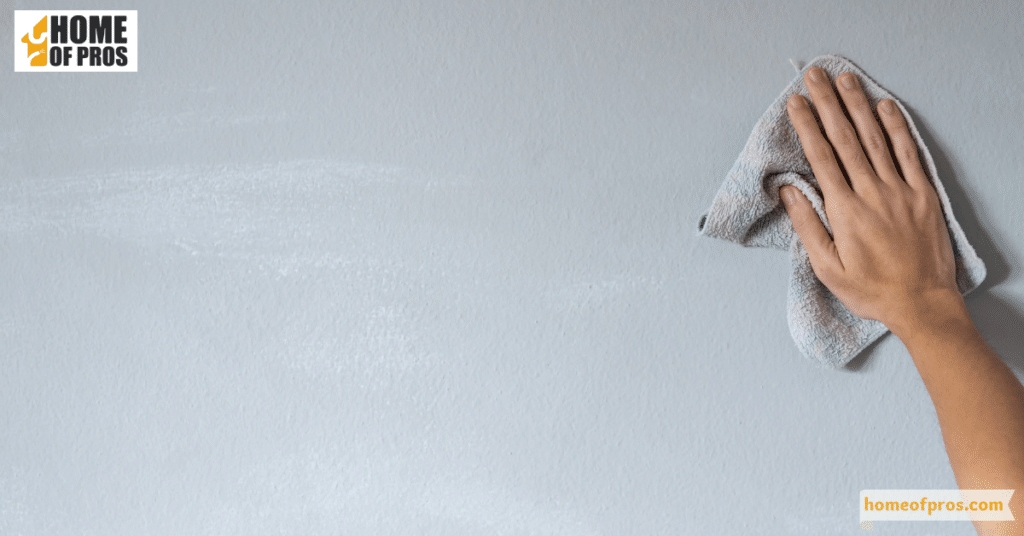
Sanding: Smoothing Out Imperfections
Sanding is the process of gently abrading the surface to create a smooth and even texture. It’s essential for removing imperfections like bumps, ridges, or rough spots on walls and ceilings. Sanding is particularly important when you’re dealing with surfaces that have been previously painted or patched.
It helps the new paint adhere evenly and prevents irregularities from showing through. Proper sanding techniques, such as using the right grit sandpaper and applying consistent pressure, ensure a uniform and professional finish, enhancing the overall aesthetics of the room.
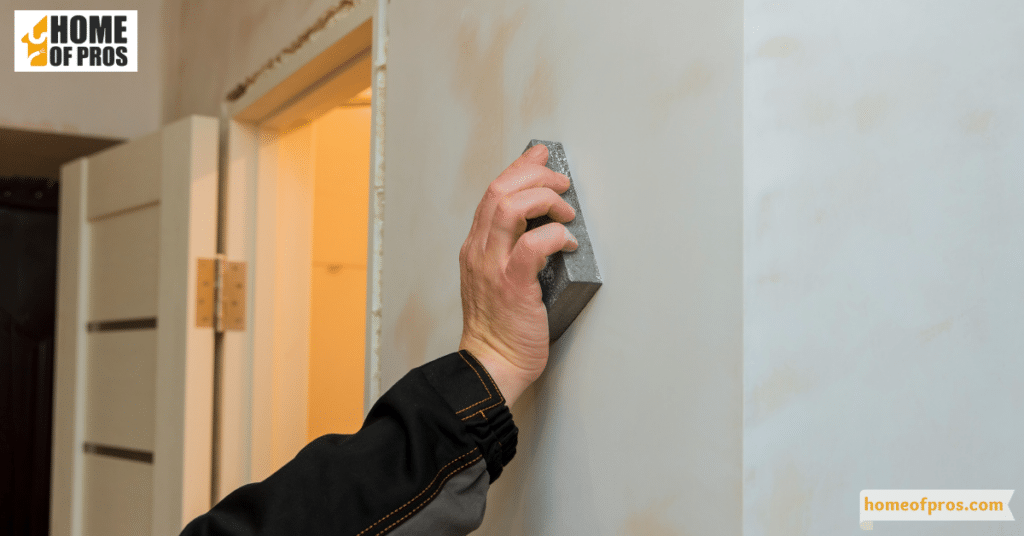
Priming: The Foundation of Longevity
Priming is a crucial step that often gets underestimated. It involves applying a layer of primer to the prepared surface before painting. Primer serves multiple purposes, such as improving paint adhesion, covering stains, and providing a uniform surface for the paint to adhere to. It also seals porous surfaces, preventing the paint from soaking in and potentially causing uneven color or texture.
Surface preparation is the secret to a successful painting project. By understanding the importance of cleaning, sanding, and priming, you’re laying the groundwork for a stunning and long-lasting finish. In the upcoming sections, we’ll continue to unravel the essential aspects of interior painting, empowering you to transform your space with confidence.

High-Quality Paints and Finishes
When it comes to interior painting, the choice of paints and finishes can make all the difference between a lackluster result and a stunning transformation. In this section, we’ll underscore the paramount importance of opting for high-quality paints and finishes.
Table: The Benefits of High-Quality Paints and Finishes
| Benefits | Description |
|---|---|
| Durability | Premium paints are formulated to withstand wear and tear, ensuring a longer-lasting finish. |
| Better Coverage | They offer superior coverage, often requiring fewer coats for a uniform and vibrant result. |
| Enhanced Color Retention | High-quality paints maintain their color over time, resisting fading and yellowing. |
| Easy Maintenance | They are easier to clean and maintain, making your walls more resistant to stains and smudges. |
Exploring Paint Finishes
- Flat/Matte Finish: Ideal for ceilings and low-traffic areas, it provides a velvety, non-reflective appearance but may be less stain-resistant.
- Eggshell/Satin Finish: A versatile choice for most rooms, it offers a subtle sheen, is easy to clean, and conceals minor imperfections.
- Semi-Gloss/Gloss Finish: Suited for high-traffic areas and trim, it has a shiny appearance, is highly durable, and is resistant to moisture and stains.
Choosing high-quality paints and finishes is akin to laying the foundation for a remarkable interior paint job. The benefits, including durability, better coverage, and ease of maintenance, are undeniable. Understanding paint finishes and where to use them enhances your ability to create the perfect ambiance in each room.
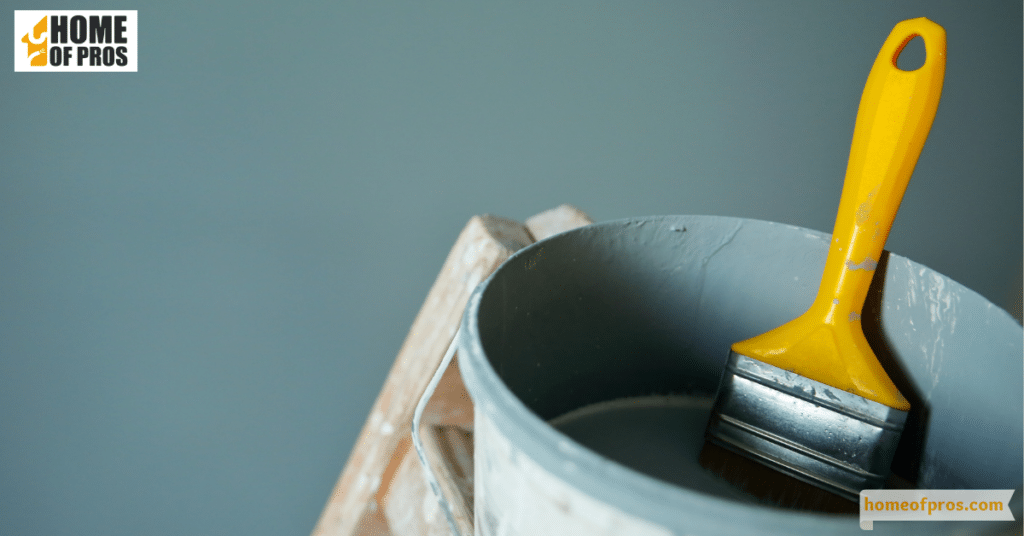
Tools and Equipment
Behind every beautifully painted room lies a set of essential tools and equipment. Whether you’re a seasoned DIY enthusiast or a novice painter, having the right tools at your disposal is key to a successful paint job. In this section, we’ll explore the must-have items that will help you achieve a professional finish and turn your vision into reality.
Essential Tools and Equipment for Painting:
- Paintbrushes: Different brushes are designed for specific tasks, from cutting in edges to painting trim. Selecting the right brush ensures precision and smooth application.
- Rollers: Rollers cover larger areas quickly and evenly. They come in various sizes and nap lengths, suitable for different surface textures.
- Paint Trays and Liners: Paint trays hold the paint while the liners make cleanup a breeze. Opt for sturdy trays and disposable liners for efficiency.
- Painter’s Tape: This invaluable tool protects adjacent surfaces from accidental paint splatter, ensuring clean lines and edges.
- Drop Cloths or Plastic Sheeting: Covering floors and furniture prevents paint drips and spills, keeping your surroundings clean.
- Extension Poles: For reaching high walls and ceilings without the need for ladders, extension poles are a handy addition to your toolkit.
As we’ve explored, the right tools and equipment are indispensable when it comes to achieving a professional finish in your painting project. Each item plays a specific role in ensuring precision, efficiency, and cleanliness.
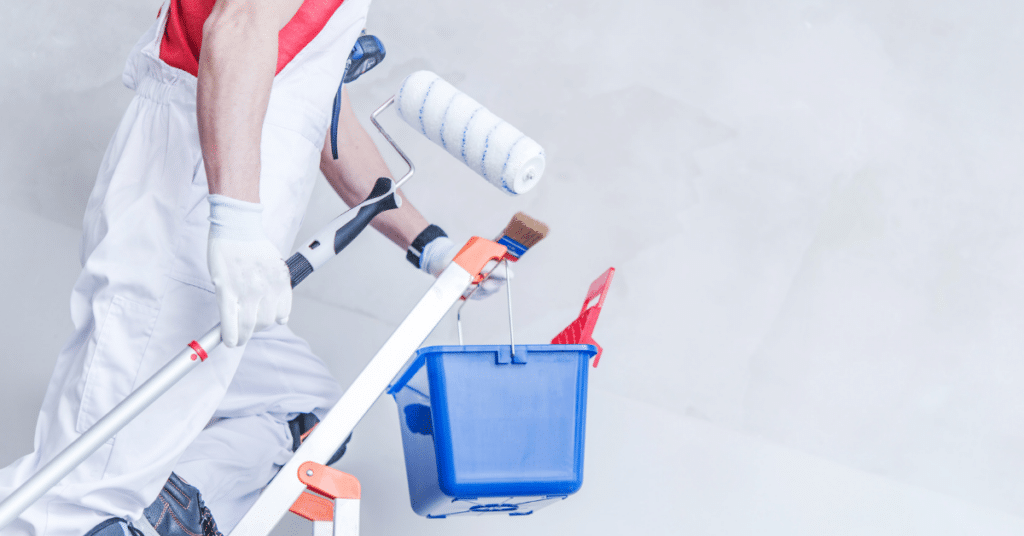
DIY vs. Professional Painting
Deciding between DIY painting and hiring professionals is a critical choice. DIY painting offers cost savings and a personal touch but demands time, effort, and the risk of uneven results. In contrast, professional painters bring expertise and efficiency but come at a higher cost.
Your decision should be based on your budget, time, and project complexity. Smaller tasks may be suitable for DIY, while larger, intricate projects may benefit from professionals’ expertise. Weigh the pros and cons to align your choice with your vision for your space.

Maintenance and Longevity
Achieving a stunning interior paint job is just the beginning; the real magic happens when you preserve that beauty for the long haul. In this section, we’ll explore the art of maintenance and longevity for your interior paint. Discover how to protect your investment, address common issues, and keep your space looking fresh and vibrant.
- Routine Cleaning: Regularly dust and gently clean your painted surfaces to prevent the buildup of grime and dust that can dull the finish over time.
- Addressing Stains: Learn how to tackle common stains like food, ink, or watermarks without damaging your paint, restoring your walls to their original splendor.
- Chipping and Peeling: Understand how to repair small chips or peels in the paint to prevent them from spreading and becoming a larger issue.
- Fading and Yellowing: Discover strategies to combat fading and yellowing, ensuring your paint maintains its original color vibrancy.
- Touch-Up Painting: Learn the art of touch-up painting to seamlessly blend and repair small imperfections or scuffs on your walls.
- Periodic Repainting: Understand when it’s time for a fresh coat of paint to breathe new life into your interior, keeping it modern and appealing.
With these tips, you have the tools to address common issues, perform routine maintenance, and refresh your interiors when needed. A well-cared-for paint job is an enduring investment in your home’s ambiance and comfort.
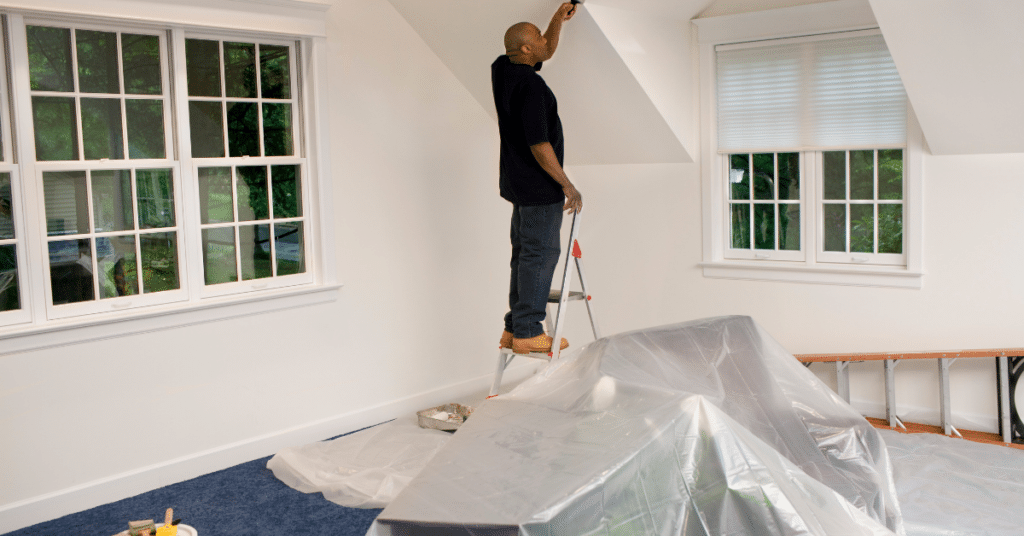
Conclusion
This guide has covered the essential aspects of interior painting, equipping you with the knowledge to create a space that reflects your vision and offers lasting beauty and comfort. Whether you’re a seasoned painter or new to the craft, remember that each decision, from color selection to maintenance, plays a vital role in transforming your living spaces into a canvas of your own making. So, pick up your brushes and roll on those colors to enjoy the transformation of your home.


